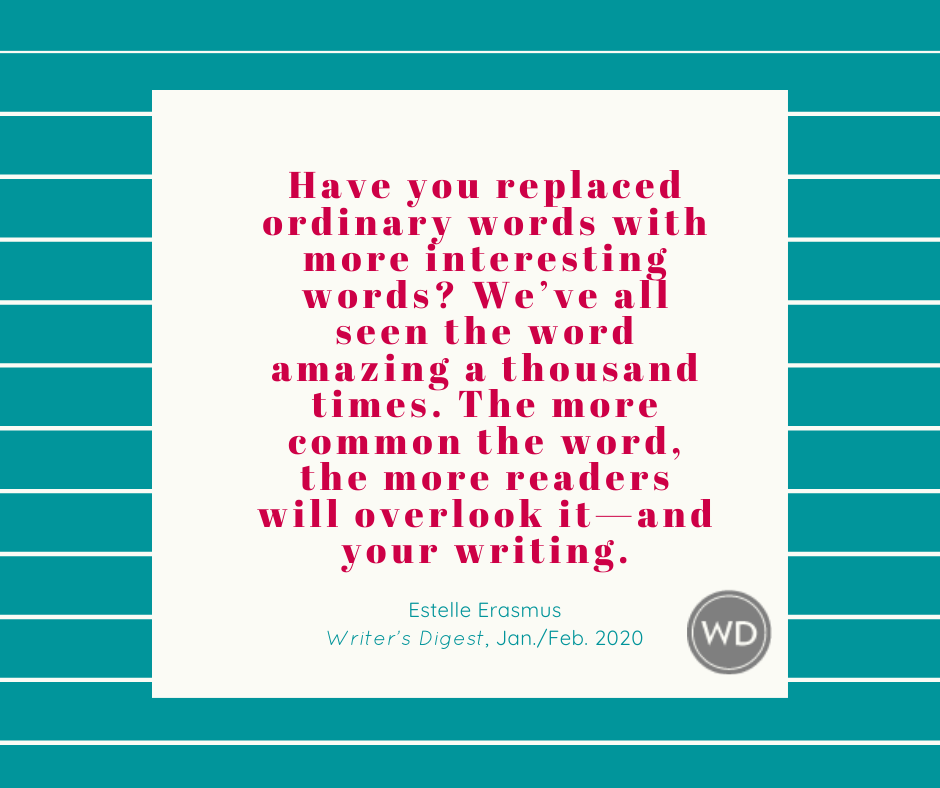Learn How To Motivate Your Characters
At some point or another, all writers will struggle with their story’s characters. If you are hitting a brick wall when it comes to developing your characters or simply need…
At some point or another, all writers will struggle with their story's characters. If you are hitting a brick wall when it comes to developing your characters or simply need inspiration for creating them--read today's tip of the day from Story Engineering by Larry Brooks. You'll learn about characterization and how the principles of human nature can be applied to fictitious characters.
The Human Nature of Character
Most writers didn’t major in human psychology in college. Which is a shame, really, because that’s one of the most important aspects of writing great stories. Our heroes and villains need to behave according to the known principles of human behavior, which may not be something you instinctivelyunderstand.
One way to grasp the rudimentary basics of how and why people do what theydo is to watch Dr. Phil. Really. Or Oprah. Or, if you’d rather read about it, grab the latest pop psychology bestseller and take some notes. Or better yet, attend one of those seminars on how to get your life together. Because each of these self-imposed experiences will show you why people—characters—think what they think and do the things they do. And if it’s valid psychology in real life, it’ll be valid psychology in your stories, too.
Read Thomas Harris’s The Silence of the Lambs and pay attention to the psychology. Both Hannibal Lecter and “Buffalo Bill” are classic studies in human psychology of a very dark variety. Stephen King’s stuff, too, is mastery of human psychology at its best and worst. It isn’t as simple as having an alcoholic, disapproving father and a psychotic mother wielding a wire hanger or bringing a knife into the shower. The backstories that inform our worldview and burden us with issues are rarely straightforward or obvious, and yet they are almost always the genesis of your main character’s story arc.
When you can wrap your head around basic human psychology, recognize that you are working with issues of second dimension characterization in the process. What you need to understand about human behavior can be reduced into several real-world buckets, into which you can dump all the details you want.
People are driven by resentment.
Someone pisses you off. You may have forgiven him for it, but unless you’ve dealt with the issue, chances are you harbor some resentment toward him. Maybe for years.
We resist that which we resent. You will resist being completely kind and openwith someone you resent, for whatever reason, at least until he does something to take away your resentment. Such as apologize. You will resist his ideas, his contributions, his very presence. This can manifest in subtle and insidious little ways, or it can come right out of your mouth. Or, it can nevermanifest at all, but it’s there in your head, festering like a slow cancer.
We resent that the president of Goodwill Industries made $800,000 a year. (That’s a true story, by the way.) So we resist giving our next garage full of junk to them, calling St. Vincent de Paul instead. A classic resentment-resistance dynamic, for which we lose not a minute of sleep.
You resent getting dumped by your old boyfriend. So you resist sending him a Christmas card every year, even though he sends one to you, which you burn without opening. Instead of thinking it’s sweet, it actually makes you angry or sad. Which only serves to deepen your resentment.
In the television series Men of a Certain Age, all three of the main characters are driven by resentment. One resents his ex-professional basketball player father’s judgmental, disapproving harshness. Another resents his wife and his own behavior after losing her. And the other resents the fact that he’s too old to continue to be fulfilled by his bachelor lifestyle. The program is about nothing other than these men and their behaviors, all of which are fueled by their resentments.
The Healing Power—and Driving Force—of Revenge
We also tend to look for ways to exact revenge against those people and things we resent. You resent your wife for spending too much money when she goes shopping. So, as revenge, you splurge on fishing equipment eventhough you know she’s not happy about it. Especially because she’s not happy about it.
Welcome to the common modern adult marriage. Good or bad, it runs on very human psychology. You may not exhibit any signs of resistance or revenge at all, even though your resentment festers. Yourresentment may manifest in your life as a cardiac event, which in a story is a reasonable and classic application of this dynamic.
The consequences of resentment and revenge manifest as third dimension decisions and behavior, motivated by second dimension issues. The first dimension window dressing that covers it all may go in either direction, either announcing it to the world or hiding it completely. For example, you run into a former lover who cheated on you, but you forgave and forgot, and then she cheated on you again, marrying your best friend. Tough stuff, easily resented and eagerly avenged. Now let’s say you run into that lover at a class reunion. The wounds have never healed, and when you see her, your blood instantly boils. But she’s thrown you a curveball—she’s visibly pregnant. And, she’s still happily married to the former best friend with whom she cheated while you were together.
So, what do you do? It’s third dimension time, because it doesn’t matter how cool you look or act (first dimension), it doesn’t matter why all this happened (second dimension), what matters is what you’ll do right now, in this moment. Be polite? Be distant? Ignore them both? Forgive them? Try to humiliate them? Act like nothing ever happened? Make a scene, storm out? Or perhaps, wish them well with a warm hug…and mean it. Whatever you do, this is a third dimension moment, and it defines your character.
As a writer crafting such a scene, you should have a keen handle on all three dimensions—how your hero tries to appear before the wheels come off (first dimension), an understanding of why his emotions are teetering on the edge of a cliff the moment his ex-lover walks in (second dimension), and the ultimate choice of behavior (third dimension).
Notice how the second dimension doesn’t dictate the hero’s choice, but rather it illuminates the hero’s motivations. Second dimension psychology is what it is—it happened, it hurt, it’s never healed. So now, in this moment of pain and pressure, whatever the hero does defines him precisely because of these second dimension issues. The reader wouldn’t be able to assign character meaning to the hero’s actions and decisions—does he take the high road or does he ass-out?—without an understanding of that second dimension characterization.
We don’t always carry our resentments and thirst for revenge on our first dimension sleeves, and it doesn’t manifest as a choice of haircut or car. Such first dimension statements are born more of a desire to be perceived a certain way,rather than the need to act upon our inner forces or backstory experiences. And again, that desire can manifest in either direction—exposure or concealment. All three dimensions conspire to create character. Yet they may still exist as discreet separate drives.
Buy Story Engineering now!
Read more tips from Larry Brooks on writing.








